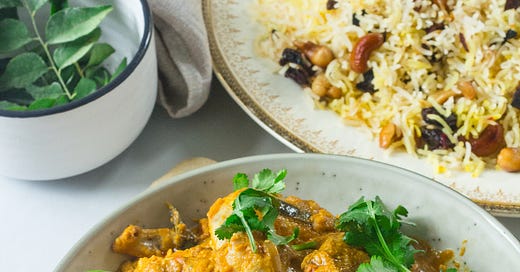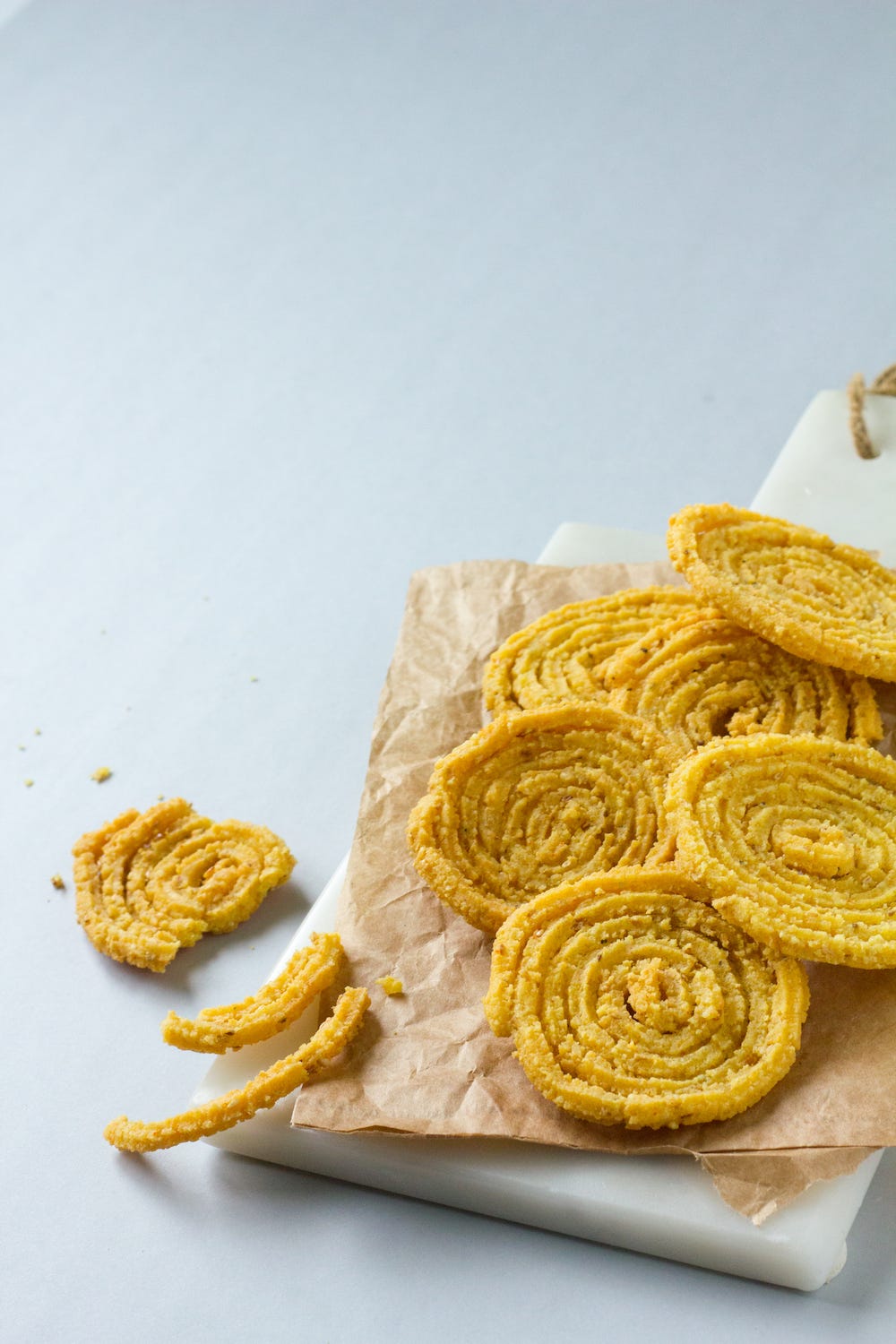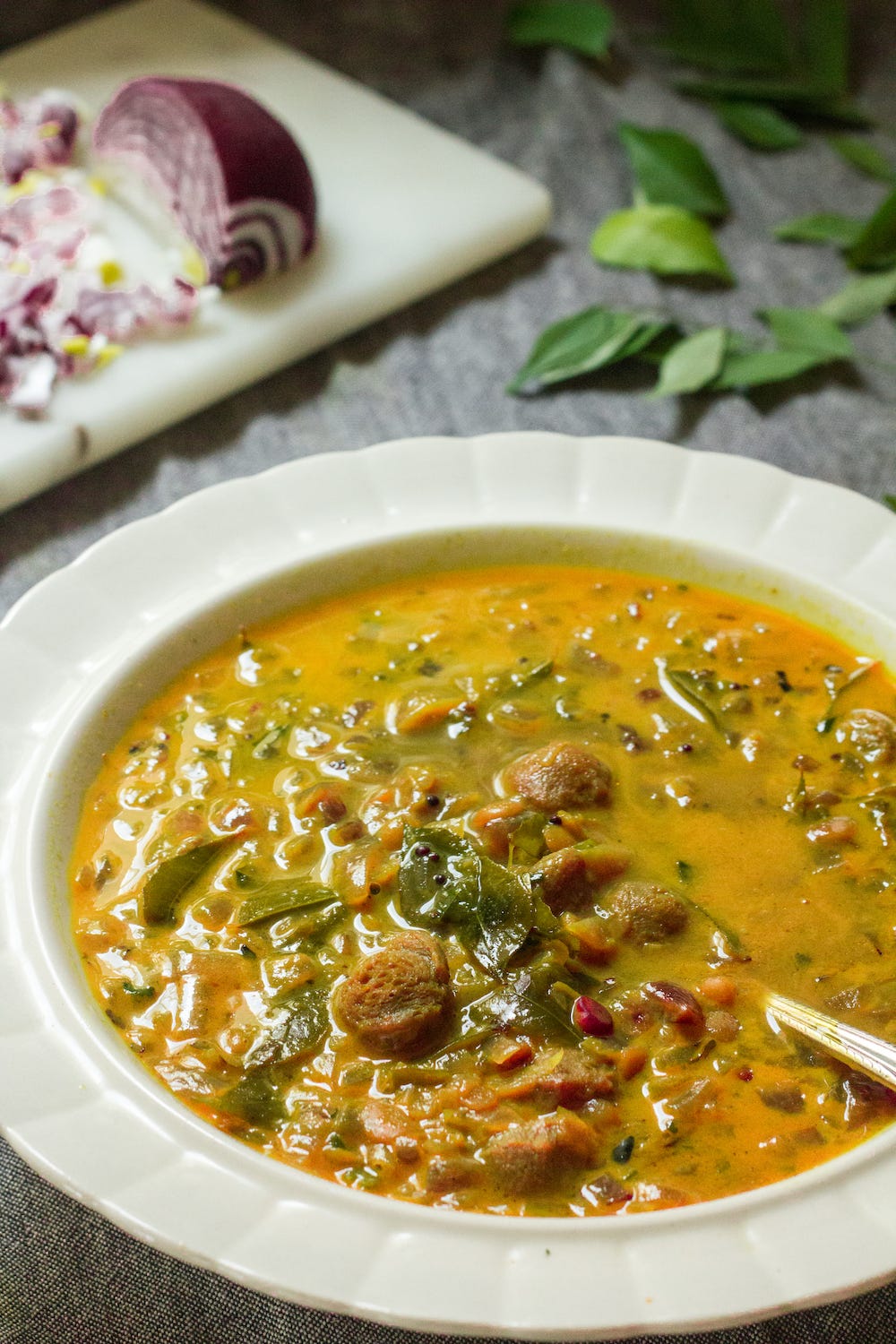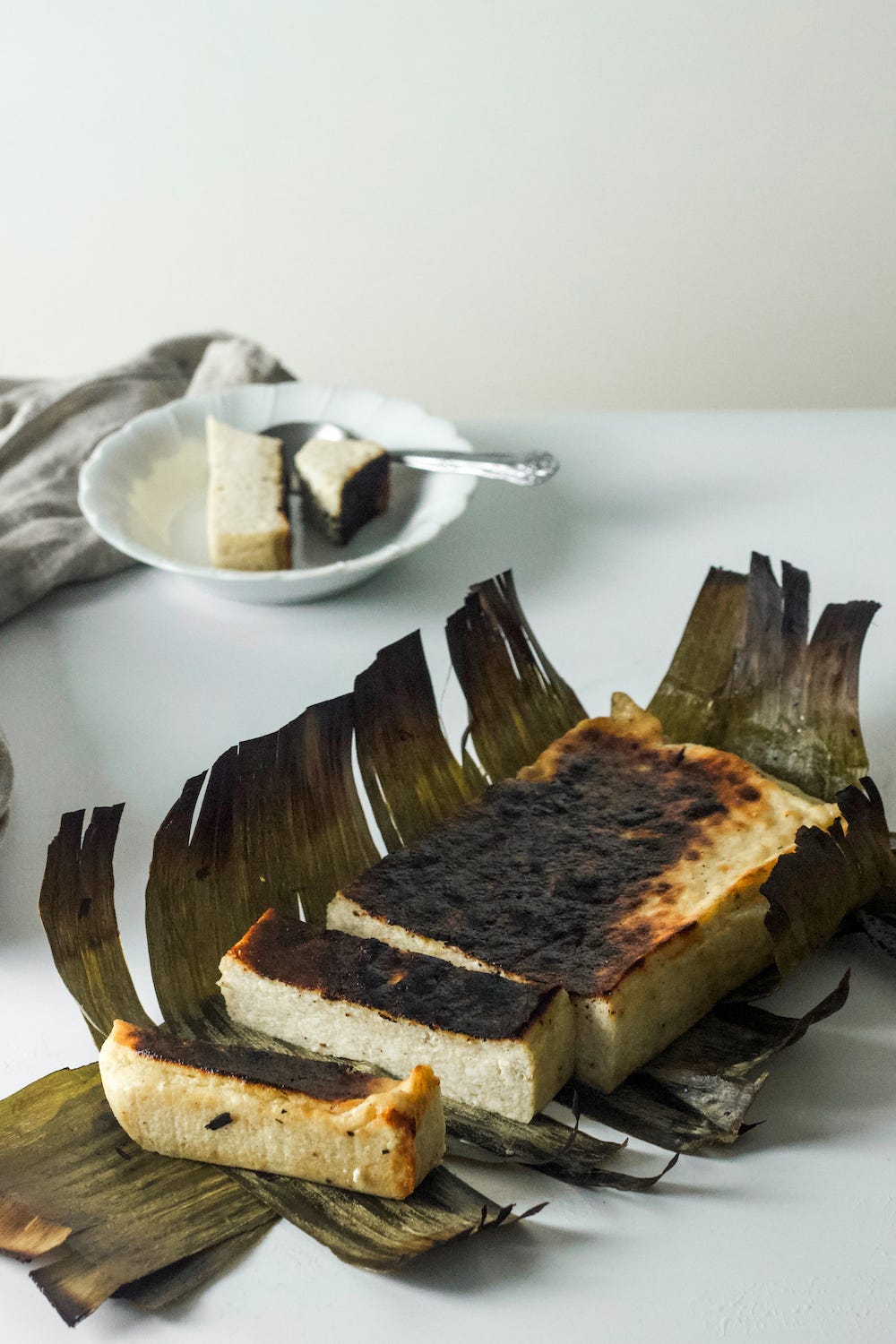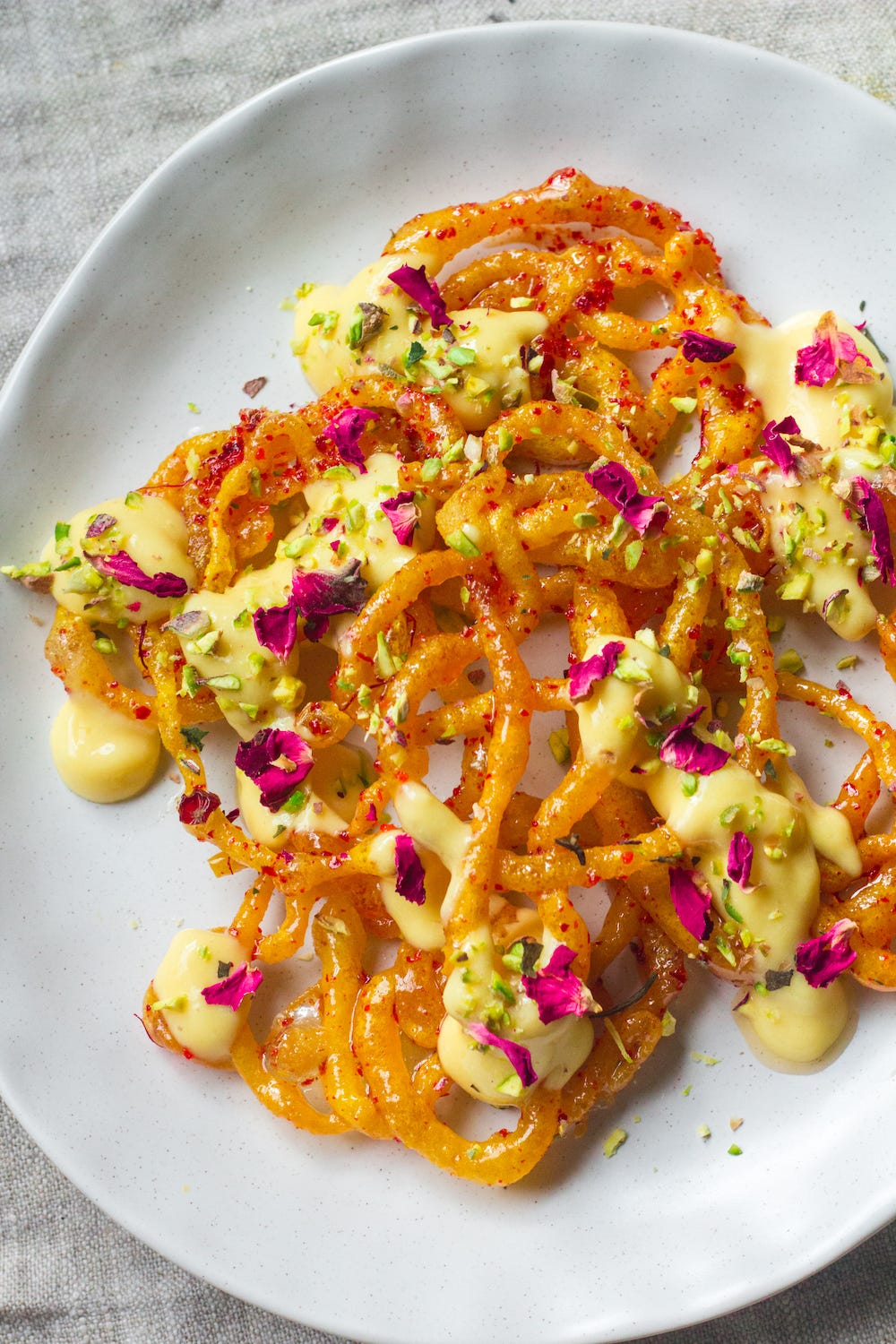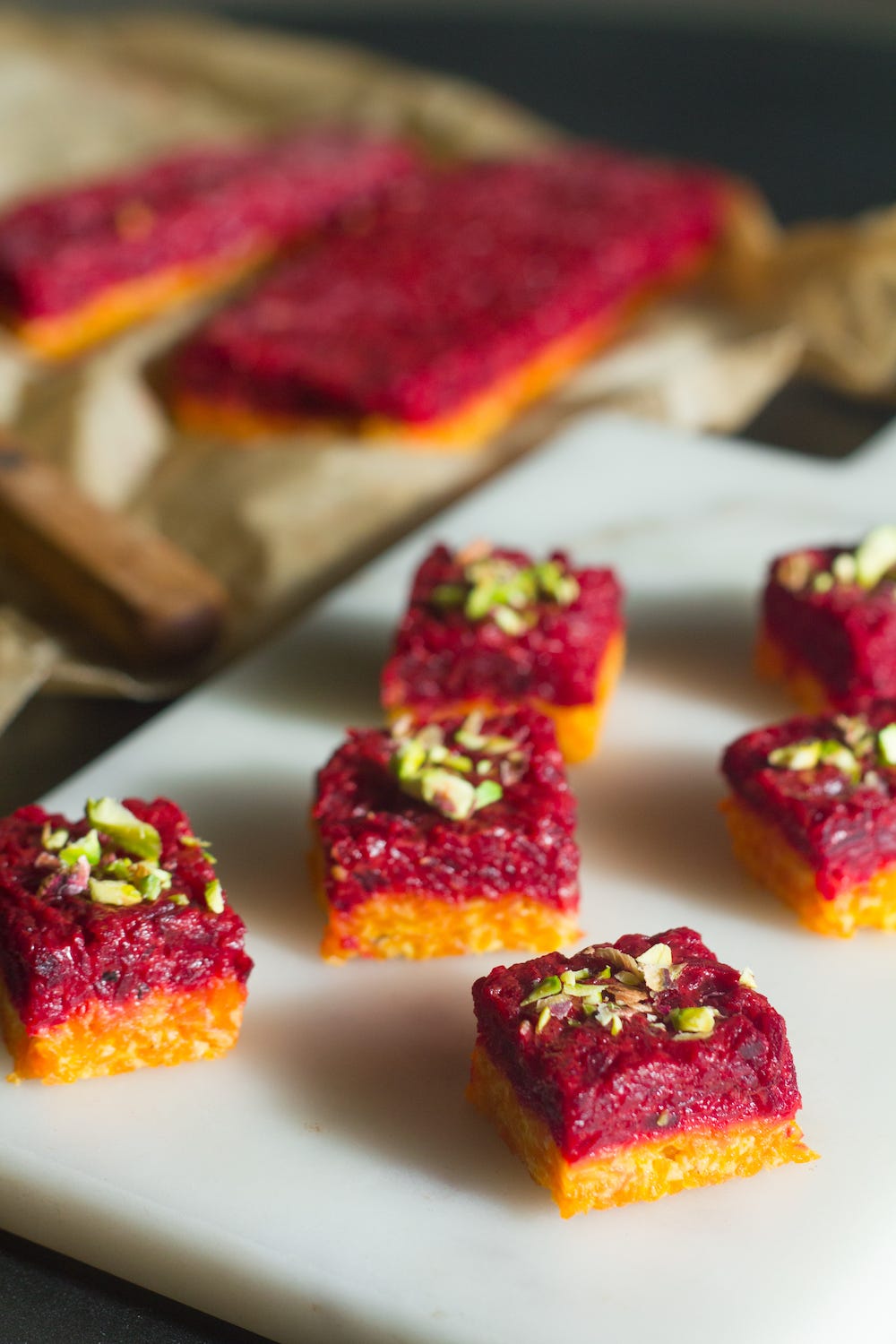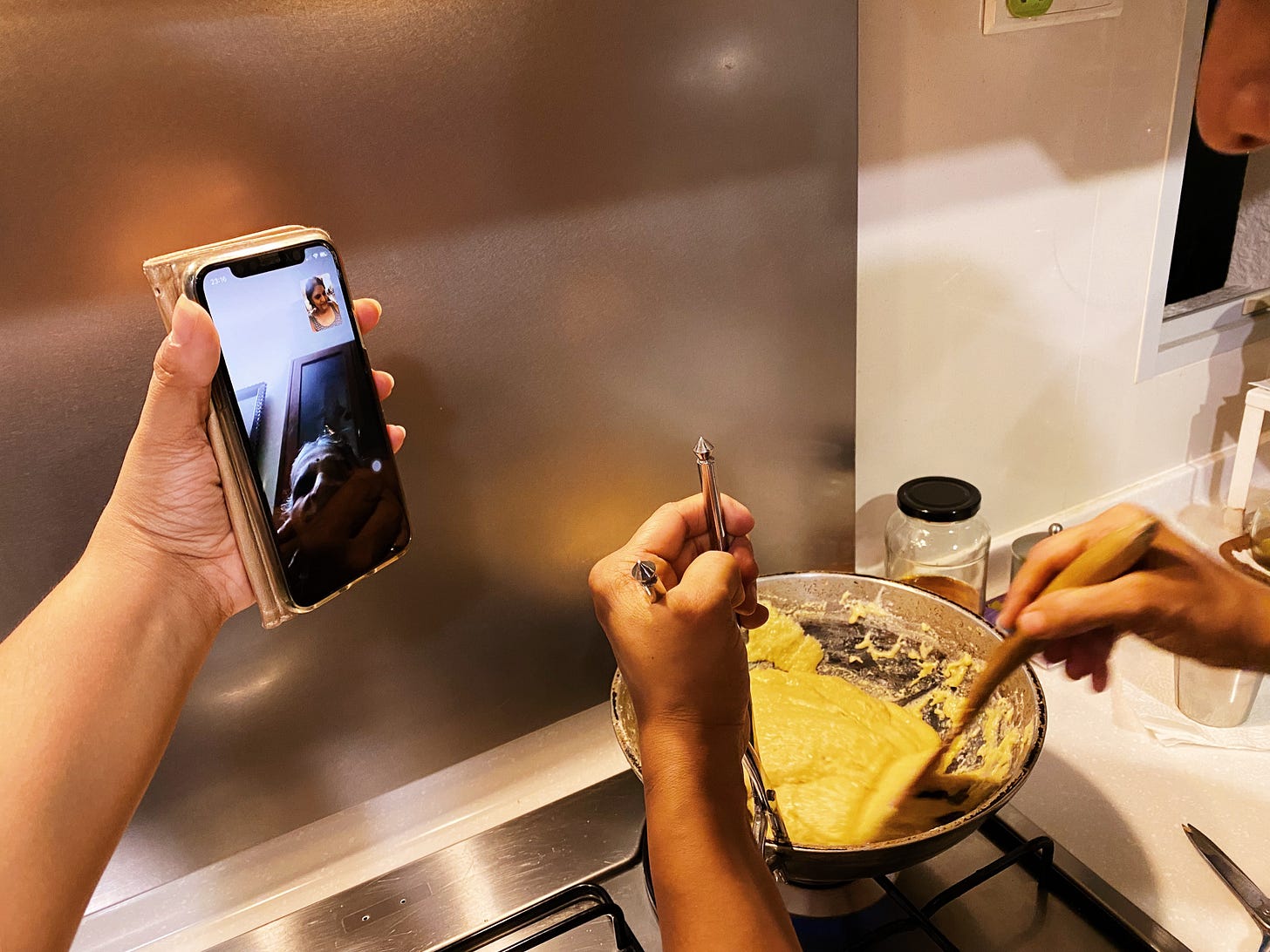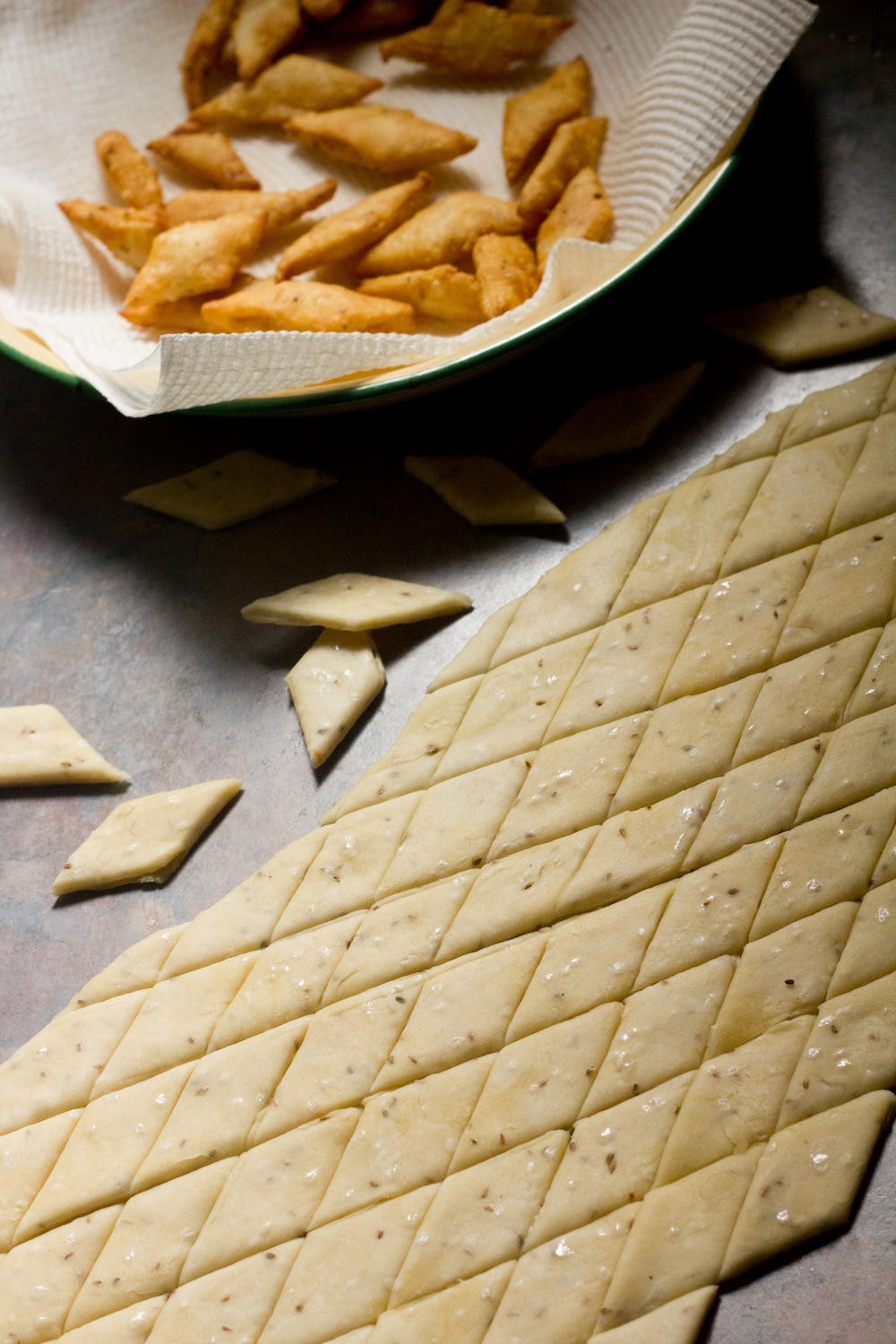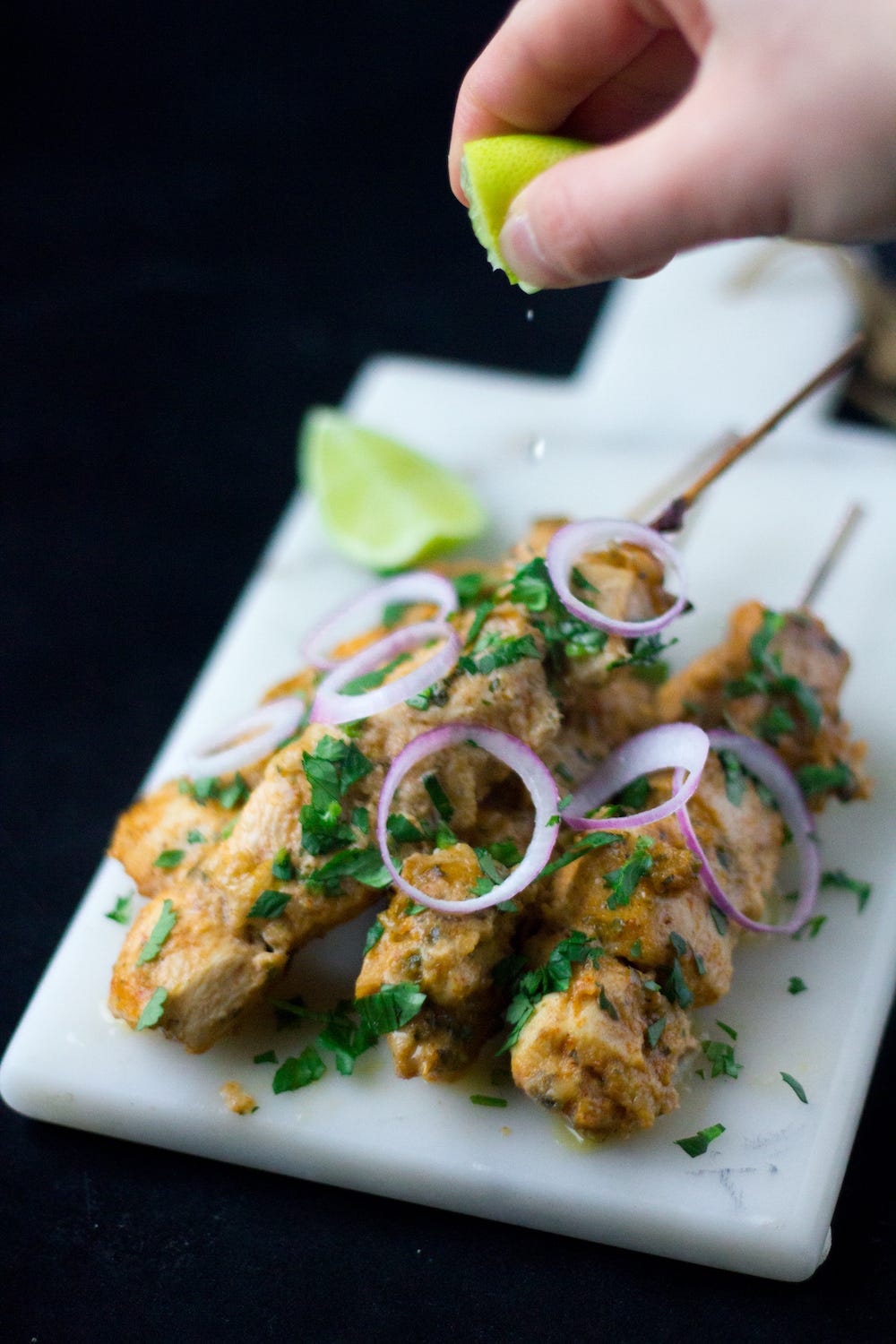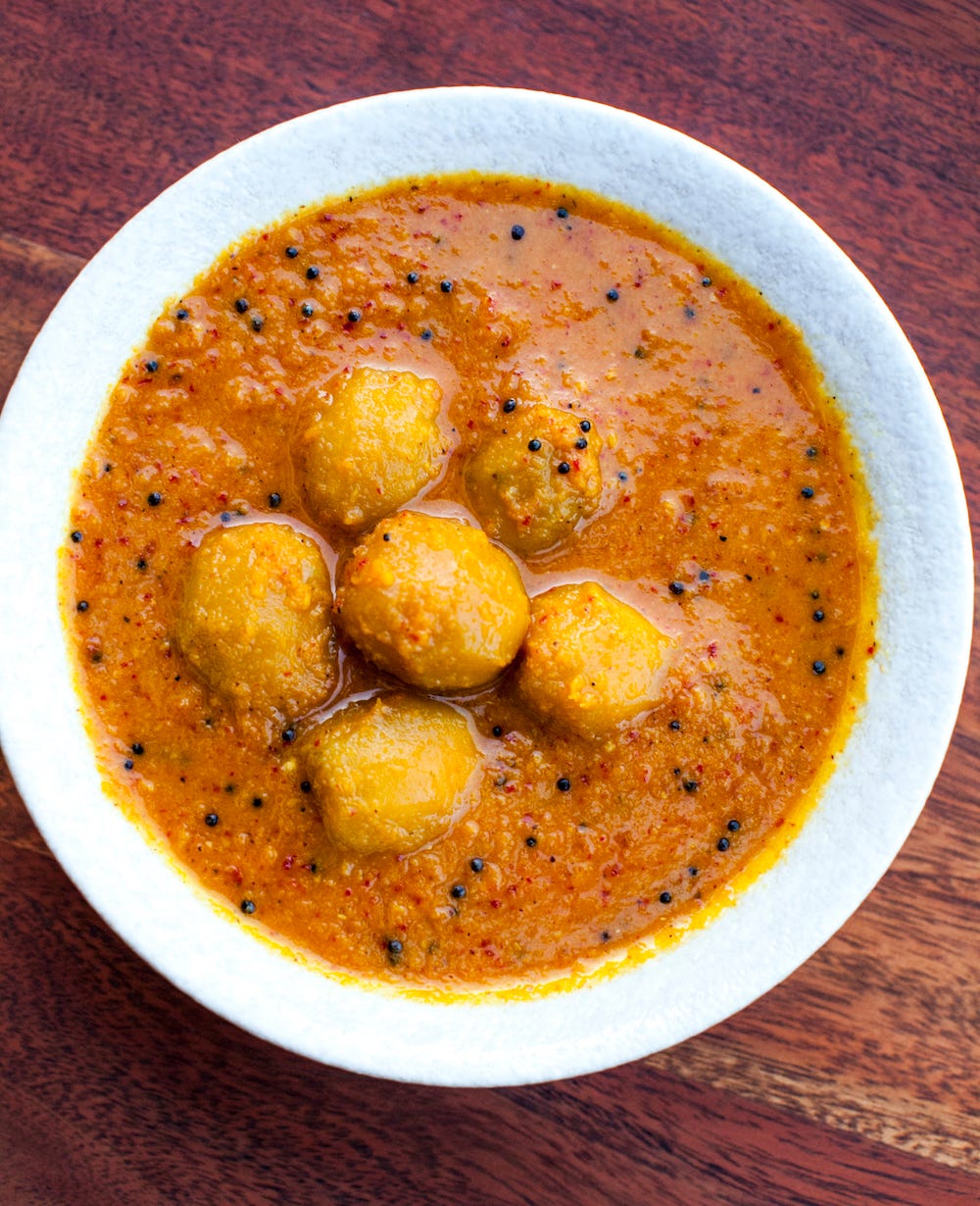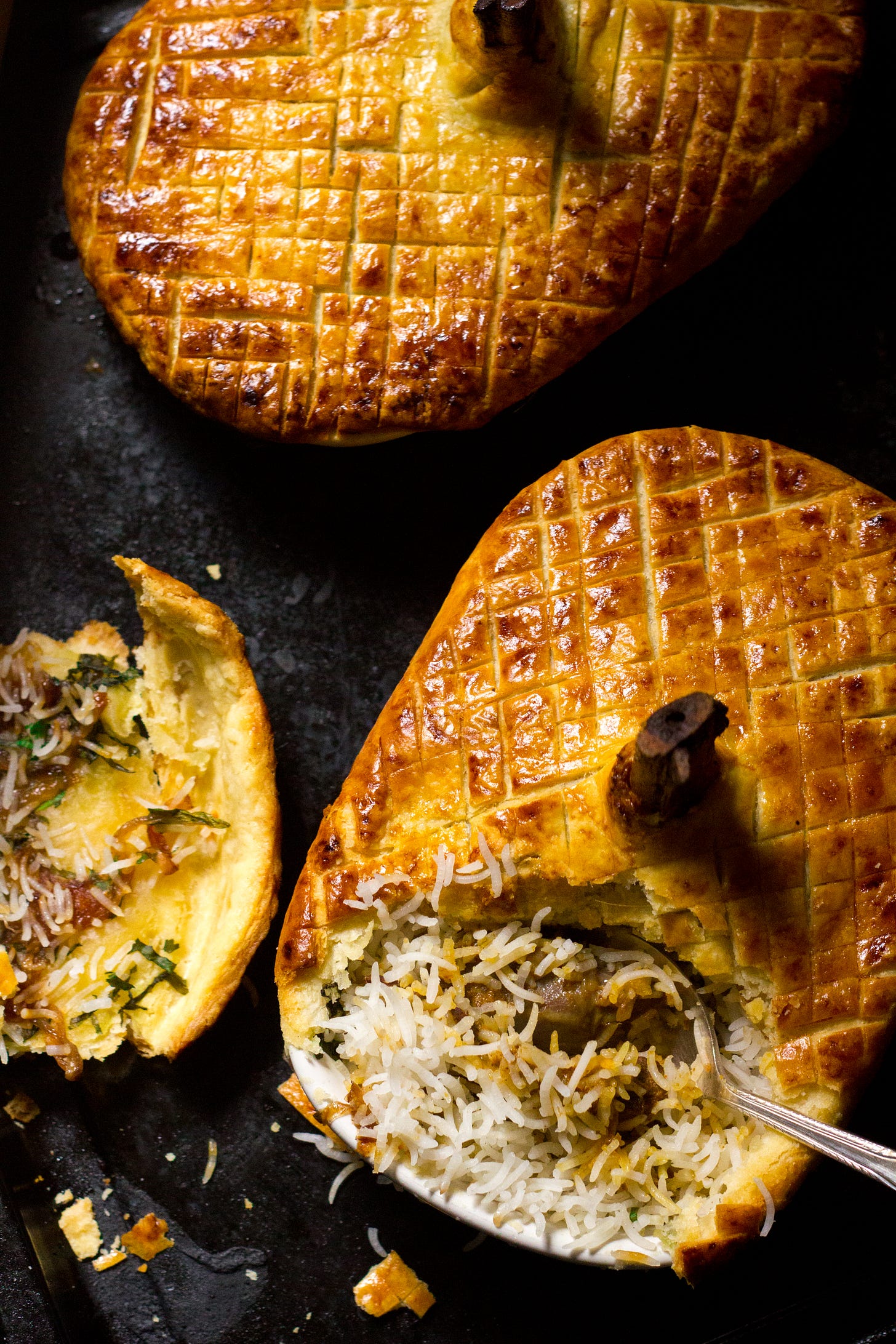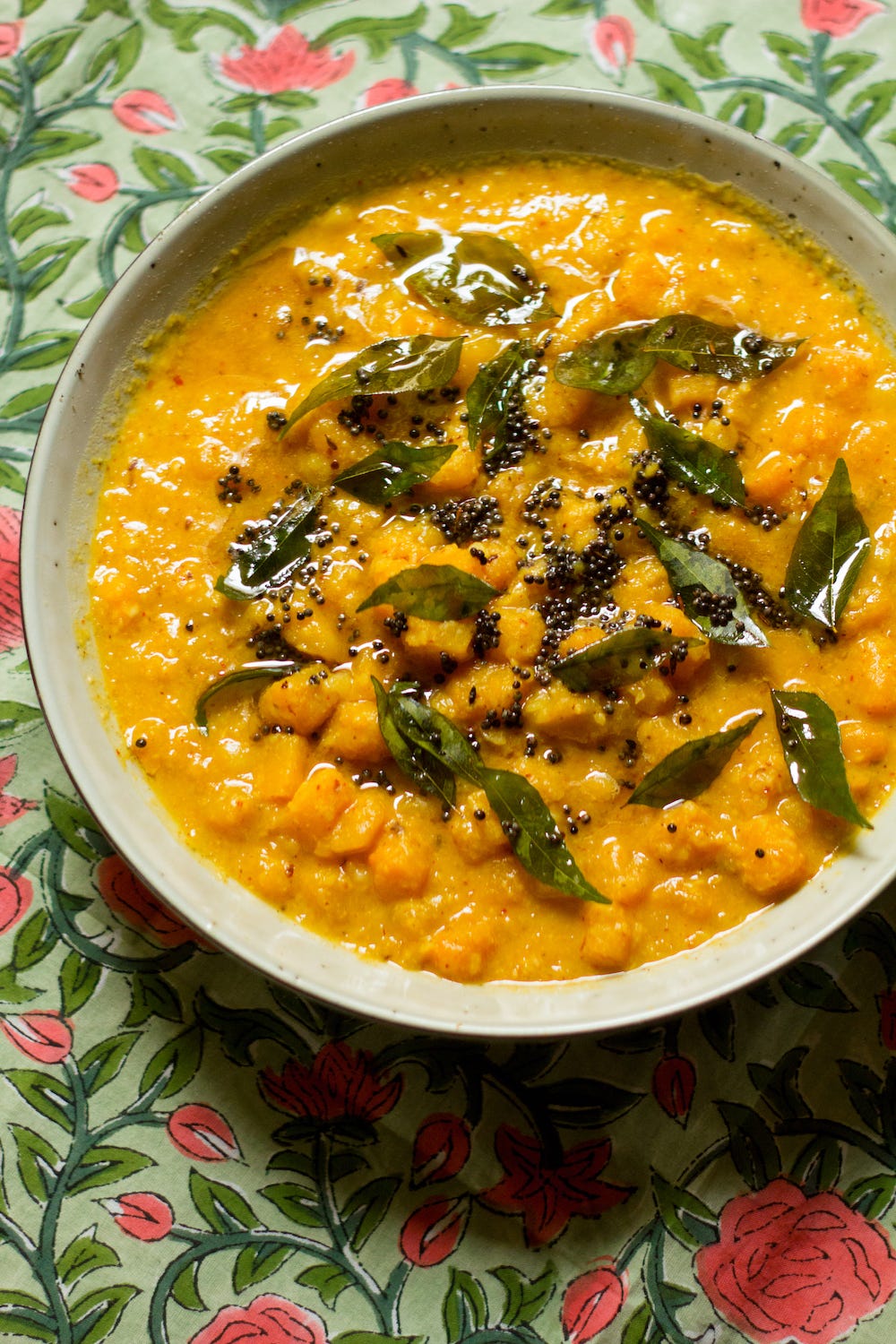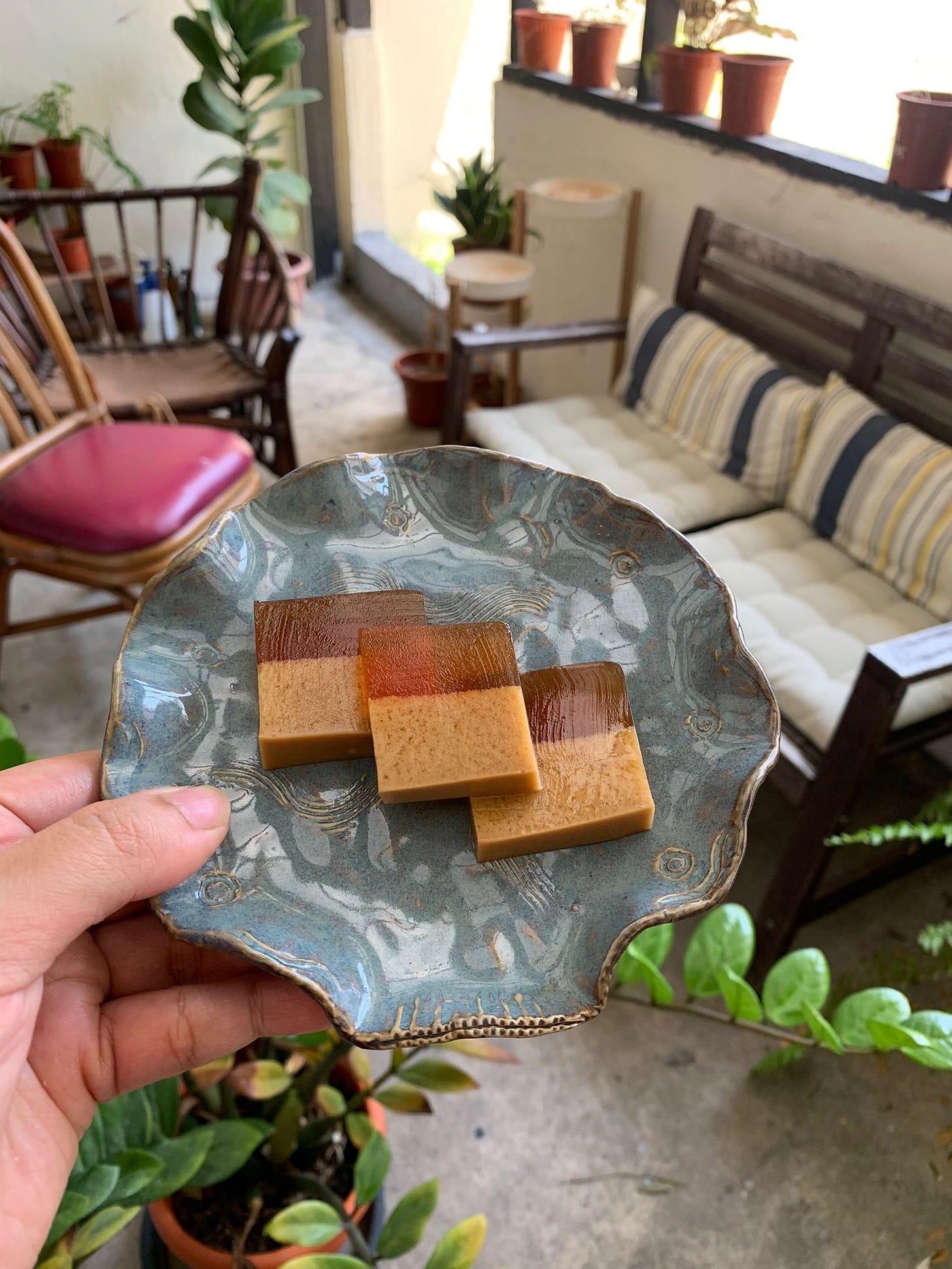The recipes in our Deepavali edition
Dear reader, I hope you had a good rest over the Deepavali public holiday if you’re based in Singapore, and that you had a wonderful time indulging in sweets and murukkus! The Deepavali Edition of Seasonings Magazine is in the midst of being printed - if you are a subscriber, you will be able to pick up your copy from next Saturday onwards, or receive it in your mailbox the following week if you opted for the mailing option. We apologize for the delay - as a two-woman team, 3 months to produce a brand new edition from scratch can be really tight! For those of you who have ordered a digital copy, you’d find it in your inbox :-)
In the meantime, as we wait for this edition to be printed, I thought I’d share about the recipes that you’ll find in the issue to whet your appetite!
Yogurt Chicken Sambal and Ghee Rice. These recipes were contributed by Aruna Shanmuga Vadivel; they are from her mother-in-law Vijeya Nagappan, who prepares the yogurt chicken sambal only during Deepavali and other celebratory occasions. Aruna insists that it has to be enjoyed with ghee rice for maximum enjoyment, and I agree! Since testing her recipe for ghee rice for the Deepavali edition, I have made this dish about five times at home because it is just so simple and so so good. It is fascinating how similar ghee rice is to the Malay rice dish nasi minyak, literally ‘oily rice’. While ghee rice uses saffron, cashews, and raisins, and nasi minyak features evaporated milk and pandan leaves, the similarities are definitely obvious and they probably share the same origin!
Difficulty level of yogurt chicken sambal: 6/10. You need a good blender for this to make the sambal, and a large wok or saucepan to toss everything together.
Difficulty level of ghee rice: 3/10. If you can cook rice in a ricecooker and do basic frying, you can make ghee rice!
Sesame Murukku. This recipe is from Kokilavani Silvarathi who got this recipe from her grandmother. “Amma would prepare murukku from scratch, unlike what I do these days with the packaged flour mixes. She would buy the necessary grains, roast them, dry them out, and bring them to the old mill along Serangoon road. Located close to the chappathi shop at Norris Road, the mill was old and dilapidated, but the smells of masalas and chilli powder were unforgettable. Amma would take the ground murukku flour home and lay it out to dry.”
Difficulty level: 8/10. This recipe has a short list of 10 ingredients, but does not rely on pre-mixes. You will need to toast and grind the urad dal and rice to make your own flour. It also does take quite a bit of experience to know what the consistency of the dough should be, and to extrude it from the press properly. The frying step is also quite technical - if you don’t fry it correctly, the murukkus will soften after a few hours and not remain crisp for days. But it is worth it!! Very tasty.
Onion Sambhaar with Soya Chunks from Prema Jayakumar. The story goes that Prema had invited her Chinese friends over for Diwali, and wanted to serve them something familiar. Realizing how similar soya chunks are in texture to fish balls, she started adding this non-traditional ingredient to her sambhaar! This was my first time working with and eating soya chunks and it was such a novel experience. I was surprised to note that they look quite like pellets! You have to soak them until they expand and rehydrate - once expanded, you give them a good squeeze to get rid of excess liquid, and they are ready to sponge up any liquid you add them to.
Difficulty level: 5/10. Pretty fuss-free experience. The hardest part is probably sourcing sambhaar powder and soya chunks, which can be quite a feat if you live abroad like I do.
Chhena Poda. Basque cheesecake seems to be all the rage this year, and I was surprised to learn that India has its own traditional version of this ‘burnt’ cheesecake. Made from fresh cheese, the batter is added to a leaf-lined pan and cooked over embers until it chars. To replicate the fire’s smoke that infuses the cake through its long cooking process, I smoked the baked cake in a wok using a combination of banana leaves, sugar, and rice. No fancy equipment required.
Difficulty: 7/10. To make this cake, you’ll need to make fresh cheese from scratch, then bake the cake, and smoke it. It is a very therapeutic cake to make though.
Chilli-Flecked Jalebis with Mango Rabri. If there’s a recipe in the book I secretly wish people would make, it’s this one. It is so simple and tastes beautiful!!! With all the traditional recipes in the book, I wanted to have a more playful take on a classic. It’s mango season now and we have gorgeous R2E2, Calypso and Kensington Pride mangoes everywhere… and when I think of mango, I think of lime and chilli. The jalebis are coated in sugar syrup and flecked with chilli, and paired with a cool creamy mango rabri. So so good. Please make this if you’ve bought a copy hahaha. Very very suitable for Valentine’s day.
Difficulty level: 5/10. Looks fancy but is actually quite low-effort!
Beet and Carrot Halwa, a recipe from Vidula Verma. “This is a very typical North Indian, Punjabi dessert. My mum made it for me when she came to visit me in Oxford close to Diwali. It was something she could do on my simple student baby Belling electric stove, and the quality of milk and carrots is so good in England. You can even get the lovely red carrots from India here.” P.S. you can get the red carrots (and sometimes the purple ones) from India at Tekka Market in Singapore. But if you cannot source purple ones, use a combination of beet and carrot like I did :-)
Difficulty level: 4/10. The hardest part is waiting for the layers to set before slicing, really.
Badam Burfi, a recipe from Vanalakshmi, Aditi Ravi’s mom. She says, “Burfi is almost a technique rather than a dish – it refers to a dense, milk-based sweet; flavoured with additional ingredients.” I agree because making burfi was such a foreign experience for me when I was testing this recipe, there is nothing in the Western repertoire of sweets that is quite like it. I tried to substitute raw almonds for what I had at home, which was roasted almonds, and I failed. I was feeling very deflated, and Aditi very kindly cooked it with her mom and shot step-by-step photos for all of us to learn! I hope to give it a go again :-)
Difficulty level: 7/10. It’s a tricky one, but I’m sure we would all be able to make it following Aditi and her mom’s clear photos. Wahaha the photo below depicts them facetiming Aditi’s grandmother.
Namak Para from Arunima Mukherjee. “My mother would fry namak para, salted crackers that resemble small wavy ribbons, made out of a maida/ atta dough (plain flour/wholewheat flour) with ajwain (carom seeds). The dough is kneaded, rolled flat, and then thin diagonal lines are cut in both directions to create small, diamond-shaped crackers. These are then deep fried in oil/ghee.”
Difficulty level: 3/10. One of the easiest recipes in this edition, I’d say that if you love fried snacks but are intimidated by murukku, make these! It is magic the way these puff up in the oil.
Murg Malai Tikka by Shalini Kale. Hafi is always raving about Auntie Shalini’s food (she is Hafi’s friend’s mother!) so we were thrilled to have her share a recipe with us. When I read the recipe, I was so intrigued - two marinades for the chicken, and mozzarella in an Indian recipe??? But the result was very easy-to-eat, easy-to-love chicken skewers. The recipe makes enough for 4, but Wex and I ate them all in one sitting.
Difficulty level: 4/10. So easy - all you need is an oven to cook these. Less clean-up!
Kedondong Chutney and Batat Fov from Rupal Bhatikar. The Goan population is so small, just shy of 2 million, so Hafi and I thought it would be so great to feature some Goan recipes in the edition, to provide some level of representation. I reached out to my Instagram friend Rupal, and she very kindly shared a recipe for hogplum chutney and a dish of poha (flattened, dehydrated rice) that is traditional to Goans come Diwali. Later, I realized that hogplum is what we know in Singapore as kedondong or buah long long! You can sometimes find the fruit sold juiced at hawker stalls, though it is becoming increasingly rare.
Difficulty level: 4/10, judging from the recipe (Rupal tested this one!)
Lamb Dum Biryani. Every single edition of Seasonings Magazine, we do a deep-dive. In the Hari Raya issue, it was rendang. In the Hungry Ghost Festival issue, it was ang ku kueh. Hafi and I both decided on biryani for this one, and I’m glad we did because the technicalities that go into this dish is unrivaled. I make no bones about the fact that this is the most involved, most challenging recipe in all three editions combined. But biryani making is truly a skill, and good biryani is worth all the trouble. Apart from the traditional biryani, I was a bit cheeky and made a pie version - you’ll get the directions for that in this issue too.
Difficulty level: 10/10 but trust me, once you learn how to make biryani, it’s happy days from there on out. Using the techniques and knowledge that I’ve learnt from our contributors and the research that went into this story, I made Wex a birthday ayam masak merah biryani recently and shared it with a friend, who said it blew his mind. No more mediocre biryanis from my home!
Kootu by Latha Sitaram, Manasa Sitaram’s mom. Apart from the ghee rice, this has to be the most-cooked dish in my household of late. It is amazing how complex dal can taste just with a handful of ingredients. A vegan staple to have in your repertoire.
Difficulty: 4/10. Quick and simple, but you do need a blender.
Gula Melaka Agar Agar from Purnima Balraju. Purnima is of Chetti Melakan heritage and she says, “The food my Nenek served are vastly different from what my mother serves during Deepavali today, for as my mother got older, she added cakes and other kuehs like makmur that she had learned from her friends to add to her repertoire. The Deepavali goodies are medley at our table. In addition to the classic murukku served at most Indian households, we also have kueh tarts, gendang kasturi, gula melaka agar-agar, fruit cake, and more. A mix of everything my family loves to eat.” This is vegan, and is the shortest of all the recipes in the edition. It might look like you have to make two separate layers, but this jelly is self-separating!
Difficulty level: 2/10. If you can cook instant noodles, you can cook this.
We can’t wait to get the issues into your hands, if you have not ordered a copy but would like to CLICK HERE 💜 Please share pictures if you make any of these dishes at home, would be so lovely to see! Till the next newsletter!

